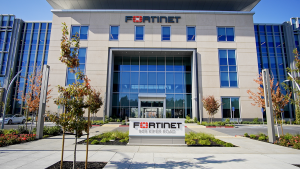Here’s What HP Doing to Salvage Investor Relations & Boost Efficiency
![]() Last week, HP announced that it had taken an accounting charge of more than five billion, after discovering accounting improperties and outright misrepresentation on the part of British software maker, Autonomy. HP had paid $11.1 billion last year to acquire the firm.
Last week, HP announced that it had taken an accounting charge of more than five billion, after discovering accounting improperties and outright misrepresentation on the part of British software maker, Autonomy. HP had paid $11.1 billion last year to acquire the firm.
This admission of failure was overwhelming, and rather expensive. In a brief statement, HP attributes this to current conditions for the PC market, and the decline in stock prices (-54% since the beginning of the year). HP’s road to recovery has centered on the Services market, where software is more than a supplemental afterthought. As the industry strains to make this transition, HP and its rivals have spent unthinkable billions on software makers with hopes of owning the stack.
Has HP lost its way in services market?
HP bought Autonomy in an attempt to compete with rivals like IBM, bolstering its presence in the enterprise software market. The takeover was planned by Léo Apotheker, HP’s chief executive at the time. But industry analysts and pundits alike, including Oracle’s CEO Larry Ellison, criticized the deal as a hugely expensive blunder.
“As an industry analyst I couldn’t fathom how it could be a billion-dollar business,” says Alan Pelz-Sharpe of 451 Research. “It didn’t have the visibility. It’s very good technology, but there was a huge disparity between what it was worth and what HP paid for it.”
![]() Lagging behind its competitors, HP had clearly shown its ambitions for services in late 2008 by launching a friendly takeover of Electronic Data Systems (EDS). Then led by Mark Hurd, the computer group had drawn $13.9 billion in its treasury to seize EDS, paying about 0.7 times its annual turnover. HP, whose market capitalization is approximately $38 billion, is currently less than 0.3 times its revenue. Originally, the acquisition of EDS allowed HP to double its turnover in services, a little more than $38 billion. In three years, its annual revenue in this sector has been eroded by over $2 billion.
Lagging behind its competitors, HP had clearly shown its ambitions for services in late 2008 by launching a friendly takeover of Electronic Data Systems (EDS). Then led by Mark Hurd, the computer group had drawn $13.9 billion in its treasury to seize EDS, paying about 0.7 times its annual turnover. HP, whose market capitalization is approximately $38 billion, is currently less than 0.3 times its revenue. Originally, the acquisition of EDS allowed HP to double its turnover in services, a little more than $38 billion. In three years, its annual revenue in this sector has been eroded by over $2 billion.
In addition to the impairment of assets, which will have no impact on cash, HP announced that the restructuring plan launched in May will be more expensive than originally planned, due to the higher than expected number of employee departures as early retirement packages. Restructuring costs will rise between $1.5 and $1.7 billion in the third quarter, against $1 billion originally planned. Taking into account all these charges, HP plans to wipe a quarterly loss of between 4.31 and 4.49 dollars per share, or approximately between $8.5 and $8.8 billion.
Unfortunately, HP’s printing revenue is down, on both commercial and consumer sides. PC sales are also not looking good. The company recently lost the number one PC maker tag to Lenovo, and tumbled to capitalize on the runaway popularity of smartphones and the fast-growing big data market. Server and storage sales are also down.
“Tech companies that were big 20-to-30 years ago are finding it extremely difficult to regenerate themselves. HP seems to be going that way,” says Richard Holway, chairman of TechMarketView, an IT analysis firm.
More challenges ahead
![]() Whitman’s biggest challenge will be convincing investors that the company’s revival strategies are enough to withstand threats from EMC, Oracle and IBM in the growing market for products that deliver computing over the Internet.
Whitman’s biggest challenge will be convincing investors that the company’s revival strategies are enough to withstand threats from EMC, Oracle and IBM in the growing market for products that deliver computing over the Internet.
“There’s a huge movement toward using the cloud as the platform, and it’s going to be hard for HP to compete,” said Joshua Greenbaum, an analyst and principal of Enterprise Applications Consulting. “IBM and Oracle have made integration of hardware and software a key to their strategy.”
HP is developing a system that will combine server computers, data storage and networking components in the same device, run Intel Corp. chips and software from such providers as IBM and SAP. As a part of a new division led by Saar Gillai, former vice president of cloud networking, HP will focus on weaving together disparate cloud-related products.
Software remains important on the mobility front as well. Here HP is seeking to emphasize security, durability and the ability to run business applications, rather than creating smartphones and tablet devices to compete against Apple, Google and Microsoft.
Recovery Strategies
A year ago HP got a new CEO, Meg Whitman, the former head of eBay. Soon after she took charge, the company announced the merger of its PC and printer divisions through a major reorganization to generate savings and boost growth. The change resulted in a more responsive, streamlined and more performance-oriented company for customers. HP has also combine other functions, such as marketing, to make the brand more value and be more efficient in general.
The company is taking cues from IBM, which employed a strategy to strengthen the role of their services products, and to get more money out of it. HP is looking to be able to provide more services – including counseling, assisting in the development of computer systems, data centers, cloud services and other such activities.
Turning to the details of the new strategy of the company, HP Enterprise Services division intends to develop its work in cloud structures, including management of cloud, optimization of user environments, and security environments. This route could be the most profitable for HP, and could push the group to serve up to 20% of HP’s total Services revenue. The remaining 80% would come from the provision of business services, analytics, consulting, and proprietary data centers.
Can HP prove its still the leader in end user devices?
The PC maker will now focus on enterprise software after the arrival of Windows 8. There is a great hope that the HP-Microsoft team up will bear sufficient fruit to show that HP is still the leader of end user devices.
“They have good technology, and the hope now is that HP can sort-of embed Autonomy’s technology [in its core business]. I think they can leverage it quite well. I think they can rebound,” says Topeka Capital Markets analyst Brian White in a research note.
The HP recovery plan fits into three main points.
- The first is the development of a more efficient supply chain and eliminate SKUs that make the development.
- Then HP should address the current problems of each business unit, which includes investing in technology for the future and streamlining processes and support services.
- Finally, HP will seek to capitalize on what Whitman called “dramatic changes in technology,” especially around the cloud, mobility, big data, information management and security.”
It is a great challenge, especially since HP has to find the money to reinvest in their businesses while still providing benefits to shareholders. That is, HP has to cut costs and become more efficient to get the money needed for reconstruction, and succeed in a rapidly shifting market.
A message from John Furrier, co-founder of SiliconANGLE:
Your vote of support is important to us and it helps us keep the content FREE.
One click below supports our mission to provide free, deep, and relevant content.
Join our community on YouTube
Join the community that includes more than 15,000 #CubeAlumni experts, including Amazon.com CEO Andy Jassy, Dell Technologies founder and CEO Michael Dell, Intel CEO Pat Gelsinger, and many more luminaries and experts.
THANK YOU





















